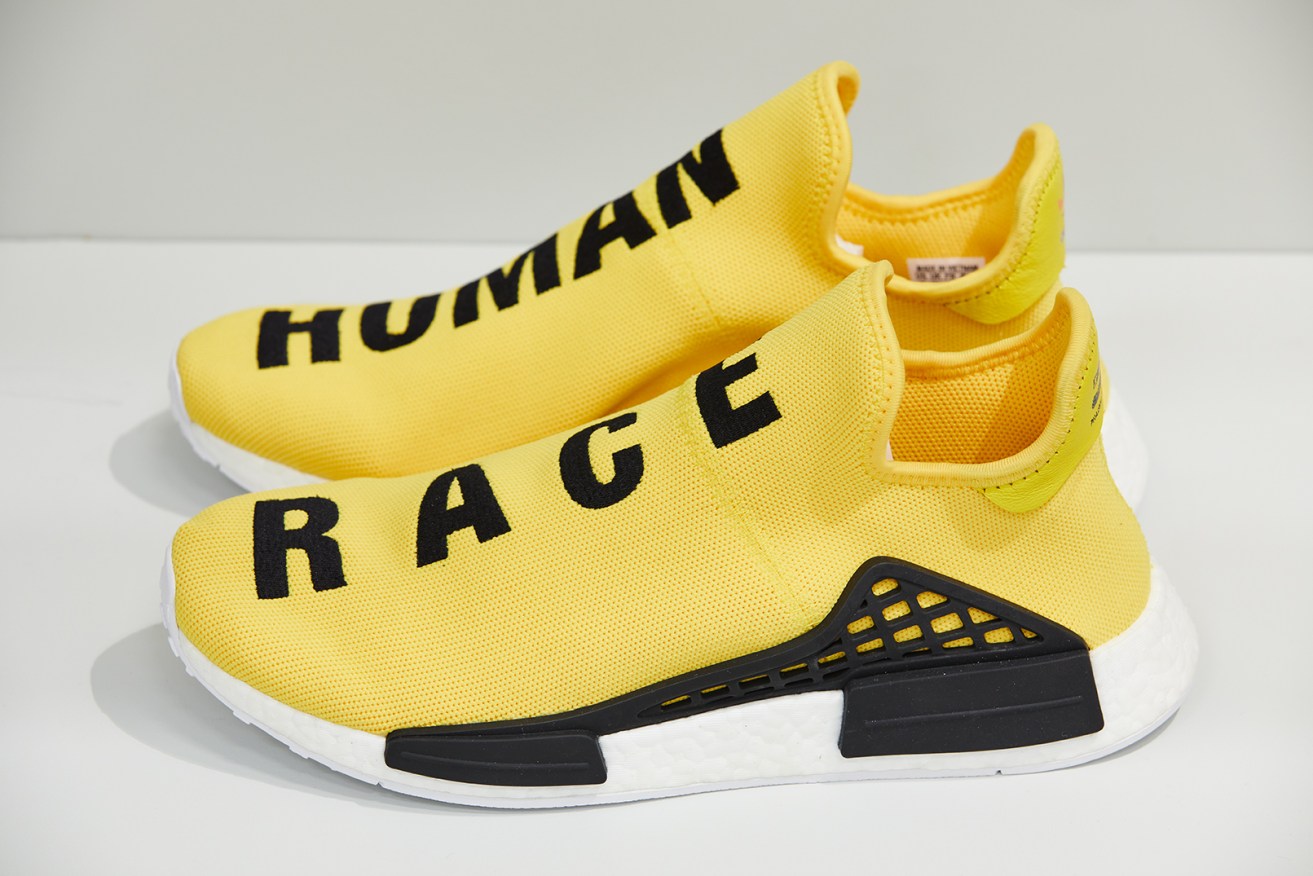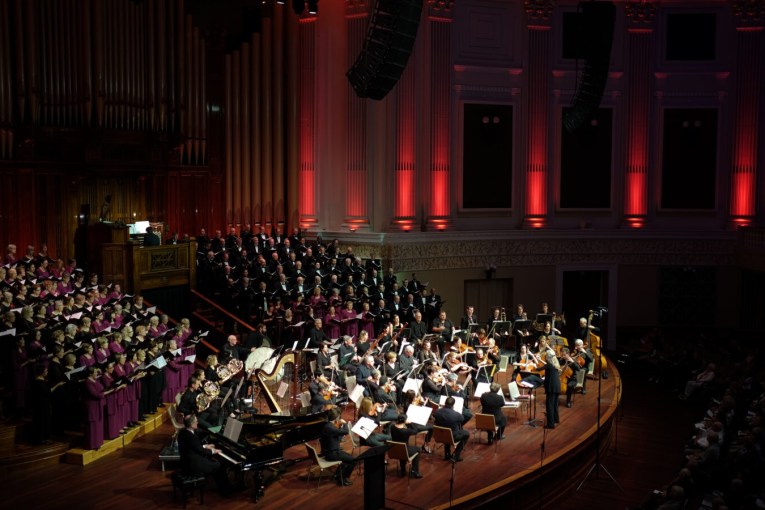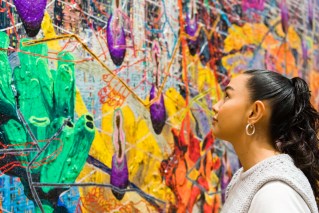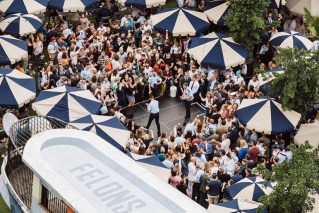From Chuck Taylor classics to pumped-up kicks, this exhibit’s a walk on wild side
The latest exhibition at HOTA Gallery on the Gold Coast turns out to be a shoe-in – as it explores step-by-step the international style and culture of the humble sneaker, writes Heidi Maier

Sneakers_EdReeve-21 =- part of the installation at HOTA.
We all love our active footwear but is it worthy of an exhibition at a major art gallery?
Trainers, joggers, kicks … sneakers have been called many things and wandering the sprawling Sneakers Unboxed: Studio to Street exhibition at HOTA Gallery, Surfers Paradise, you are struck by the unexpectedly rich history of this footwear tradition and the immense efforts devoted to popularising it.
For all of the pioneering technology behind the latest sneaker designs, what ultimately emerges is a story of the irresistible power of hype.
From travelling salesman Chuck Taylor, a basketball player who toured US high schools in the 1920s teaching ball skills and promoting his Converse All Star boots, to Nike’s four-decade billion-dollar partnership with basketball legend Michael Jordan, the exhibition tells a fascinating tale of celebrity endorsement, artificial scarcity, limited-edition collaborations and the elaborate media storytelling that brands develop to create a frenzy of excitement around the latest drop. But it wasn’t always this way.
The popularity of sneakers first came as a surprise, according to curator Ligaya Salazar. When German brothers Adi and Rudi Dassler began making sports shoes for athletes, they and their successors had no idea that their respective companies, Adidas and Puma, would become cult classics on street basketball courts and breakdancing mats all over the US.
They were focused on designing precision sportswear for the World Cup and the Olympics, not creating footwear for rappers.
It might now sound like a paid promo, but Run-DMC’s 1986 hit single My Adidas shows how these sneakers became part of popular culture. They sang: Now the Adidas I possess for one man is rare. Myself homeboy got 50 pair, Got blue and black, ’cause I likes to chill, And yellow and green when it’s time to get ill.
Premiering at London’s Design Museum, this exhibition charts how brands became fashion items and styles were adopted and developed by subcultures from Tokyo to Cape Town, becoming part of the uniforms of urban tribes. Battered, gaffer-taped pairs of Vans show how skaters took the opposite approach to hip-hop’s obsession with box-fresh sneaks.
A section of the exhibition on casual culture shows British football fans in the northwest in the 1970s decked out in coveted Adida Trimm Trabs, a shoe that was designed to encourage middle-aged people in Germany to exercise.
We meet the Cholombianos of Monterrey, Mexico, who pair their Converse All Stars with outfits emblazoned with religious iconography and the obsessive Bubbleheads of South Africa who favour Nike high-tops with the biggest air bubbles bulging from the soles.
A 2015 film by Grace Ladoja explores the ubiquity of the shoe as part of the uniform of the London grime scene and Japan plays a critical role in the transformation of the sneaker from everyday streetwear to high-end status symbol. Tokyo’s Harajuku district and the country’s boutiques fostered an experimental culture, featuring models customised by local designers.
“It was the tipping point,” Salazar says. “The brands finally realised what they were sitting on in the late 1990s and early 2000s, and started to partner with young designers and ramp up the pace of rare releases.”
Camping outside stores overnight to be first in line for new releases became commonplace, followed by online raffles and the arrival of professional resale sites such as StockX and Goat.
A pair of 2016 Nike Mags, the futuristic self-lacing shoes worn in Back to the Future Part II in 1989, is currently listed for sale for AUD$218,454.
The exhibition showcases sneakers worn on the runways of haute couture fashion shows by Commes des Garcons, Yohji Yamamoto and Balenciaga, among others, also showcasing the corresponding outfits.
The line between technical performance and absurdist fashion statement is a fine one. The exhibition is split into two themes – Style and Performance – and it leaves you wondering if many of the technical innovations are merely further style ploys, all part of feeding the hype machine.
A section on technical innovation dutifully covers everything from traction to cushioning, fit, stability and energy return, tracing the evolution of bubbles, gels, air pumps, barefoot skins and many other novelty devices designed to enhance athletes’ performance … and to sell more shoes.
After Kenyan runner Eliud Kipchoge became the first person to complete a marathon in under two hours in 2019, Nike revealed he was wearing their latest Alphafly design, which has carbon fibre plates in the sole and air pods under the toes. The response from many in the running world to these shoe-sized trampolines? They should be banned.
With that in mind the exhibition’s final section sheds light on the morality of the industry. It features a few brands, such as Veja and Satoshi Studio, focused on transparent, low-impact supply chains and more ethical manufacturing.
There are Adidas Stan Smith trainers made from mushroom leather and other innovations, plus a section showcasing designers dedicated to sustainability.
When you learn that sneaker production accounts for 1.4 per cent of all global greenhouse gas emissions, it makes you think.
Sneakers Unboxed: Studio to Street is on at HOTA Gallery, Surfers Paradise, until February 2024
hota.com.au
This article is republished from InReview under a Creative Commons licence. Read the original article.
InReview is an open access, non-profit arts and culture journalism project. Readers can support our work with a donation. Subscribe to InReview’s free weekly newsletter here.












